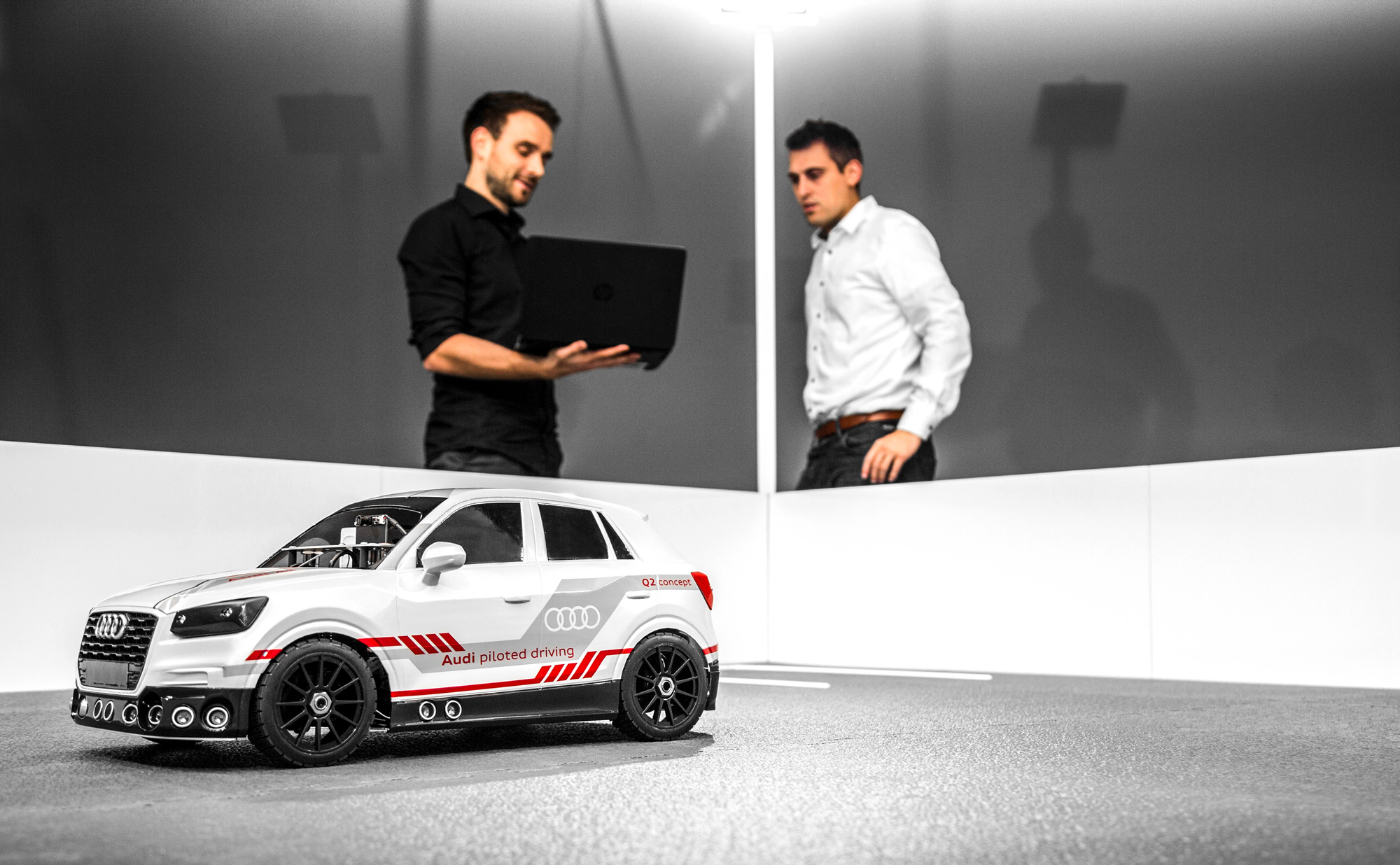Audi’s New AI Rig for Driverless Cars Is … a Toy Car
If a machine’s going to teach itself to park, it may as well practice in complete safety.
How do you get a car to learn to park? For Audi, the first step is taking it out of the toy box.
The automaker’s Audi Q2 Deep Learning Concept is actually a one-eighth scale version of the real thing that roams around a three-meter square model parking lot. Much like its life-size counterparts, its body is studded with sensors, including two cameras and 10 ultrasonic sensors, that allow it to scan for obstacles and find a space to maneuver into.
But why is Audi using a toy when there seem to be full-blown autonomous cars zipping around every forward-gazing city? Well, that’s because it’s learning how to park all by itself.
This story is only available to subscribers.
Don’t settle for half the story.
Get paywall-free access to technology news for the here and now.
Subscribe now
Already a subscriber?
Sign in
You’ve read all your free stories.
MIT Technology Review provides an
intelligent and independent filter for the
flood of information about technology.
Subscribe now
Already a subscriber?
Sign in
The small vehicle uses reinforcement learning to work out how to move around the parking lot. Essentially, then, it starts by using trial and error, but is informed when it did a good job—say, by parking straight between the lines in a spot. Over time, that allows it to refine its technique and learn to park as well as possible. There are invariably a few bumps along the way, so using a toy car makes sense.
Because reinforcement learning allows algorithms to learn how to perform tasks from scratch, it could be particularly useful for autonomous cars, where unpredictable road conditions could catch out hand-coded algorithms. Obviously the model’s abilities can’t be directly ported to a full-size car, but the approach will allow Audi engineers to understand how to use reinforcement learning in real vehicles, and the Verge notes that Audi plans for such features to appear in the next generation of the Audi A8.
It isn’t the only company experimenting with machine learning to enable autonomous cars to drive, though. MobilEye and Oxbotica are also developing similar systems, and Uber’s new AI laboratory will likely explore it, too. Hopefully all at full-scale.
(Read more: Verge, “An Ambitious Plan to Build a Self-Driving Borg,” “Uber Launches an AI Lab,” “Oxbotica’s New Autonomous Vehicle Software Learns As It Goes”)
